Our design students are always concerned about their lack of experience and their portfolio. They say things like " If every design job I see asks for at least 3 years of experience how do I ever get that experience?" It's your classic chicken/ egg dilema.
But we're gonna show you some useful and some crazy ways you can start gaining experience and go after the jobs you want even with little or in some cases no experience at all.
Although you may not have everything you need to start with, the best way to start creating your portfolio and gaining the experience you'll need to landing the jobs you want it to take a targeted approach. I suggested focuses on these 5 main targets:
Target 01: Research
You should treat your job search they same way you would treat a UX project. Do your research, learn about the needs of the company, understand and empathize with them and test the waters.
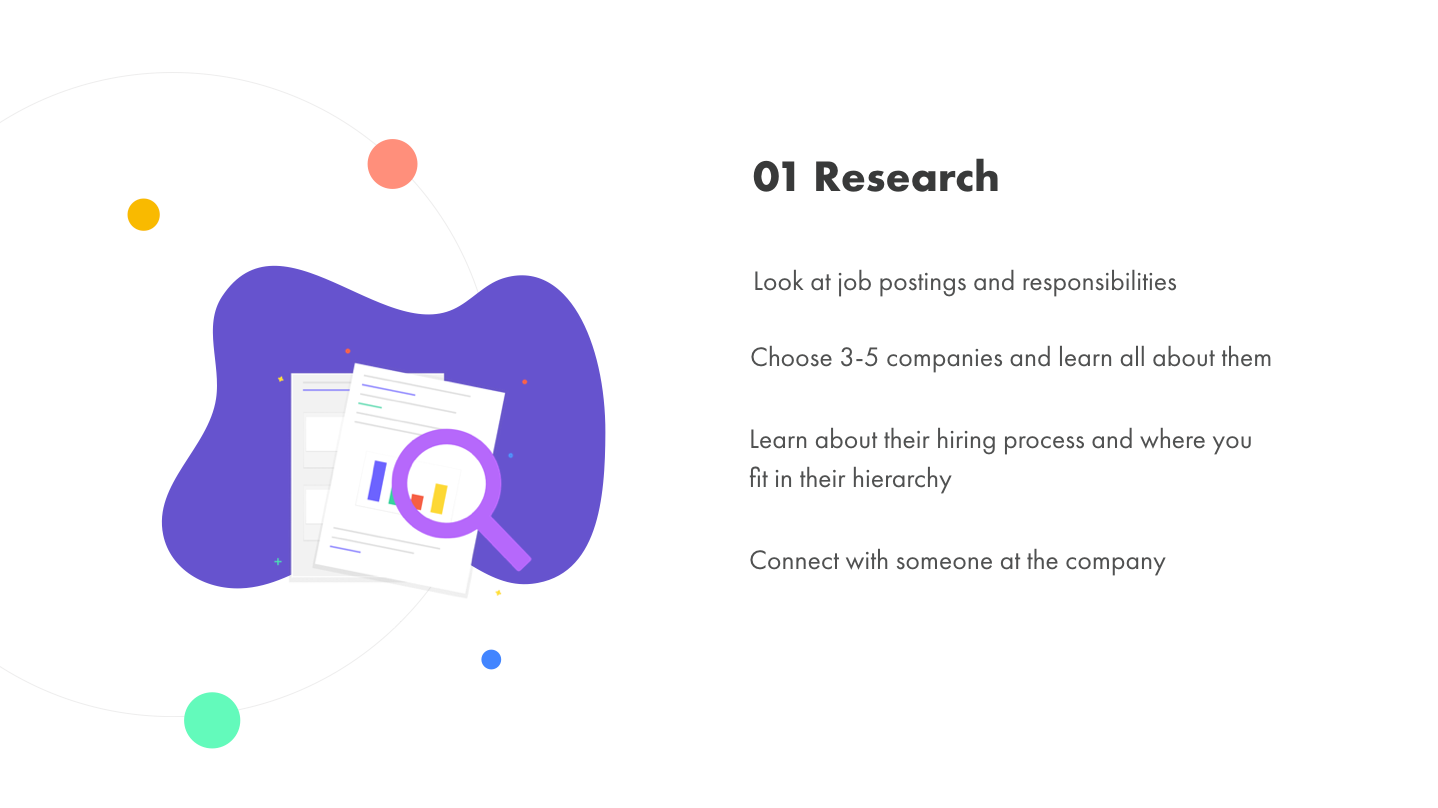
- Research job postings - Look for roles and responsibilities that suit you best. Every company defines them differently and they each have different expectations so you'll need to sift through many similar posting to get a good idea of what you're looking for. Unfortunately there’s no universal guidelines and every company/client uses slightly different vocabulary.
- Learn about the company - It's really important to understand the type of company you want to work for. Spend your time learning the inner working and mission of 3 to 5 companies that you want to work for and what they expect from the position. Rather than sending off 20 job applications, really start to understand the role the people and the mission of a few specific companies.
- Learn about their hiring process - How does the company hierarchy work and where do you fit into that hierarchy? If you’re just a beginner with one year of practice under your belt, you don’t want to try and go after the senior roles or maybe even the junior roles try focusing on landing internship first.
- Connect with others at your level - Reach out to other people at the company that are at your level; perhaps other interns or other juniors. Ask them about how they got into their position and get their advice. Remember you’re just collecting data at this point and evaluating if the work is a right fit for you.
Target 02: Get educated
Experience/portfolio or not, you still need to become great at what you do. In order to refine your design skills and make you a valuable asset, you'll need to make sure you are getting a quality design education and constantly practicing and mastering your craft.
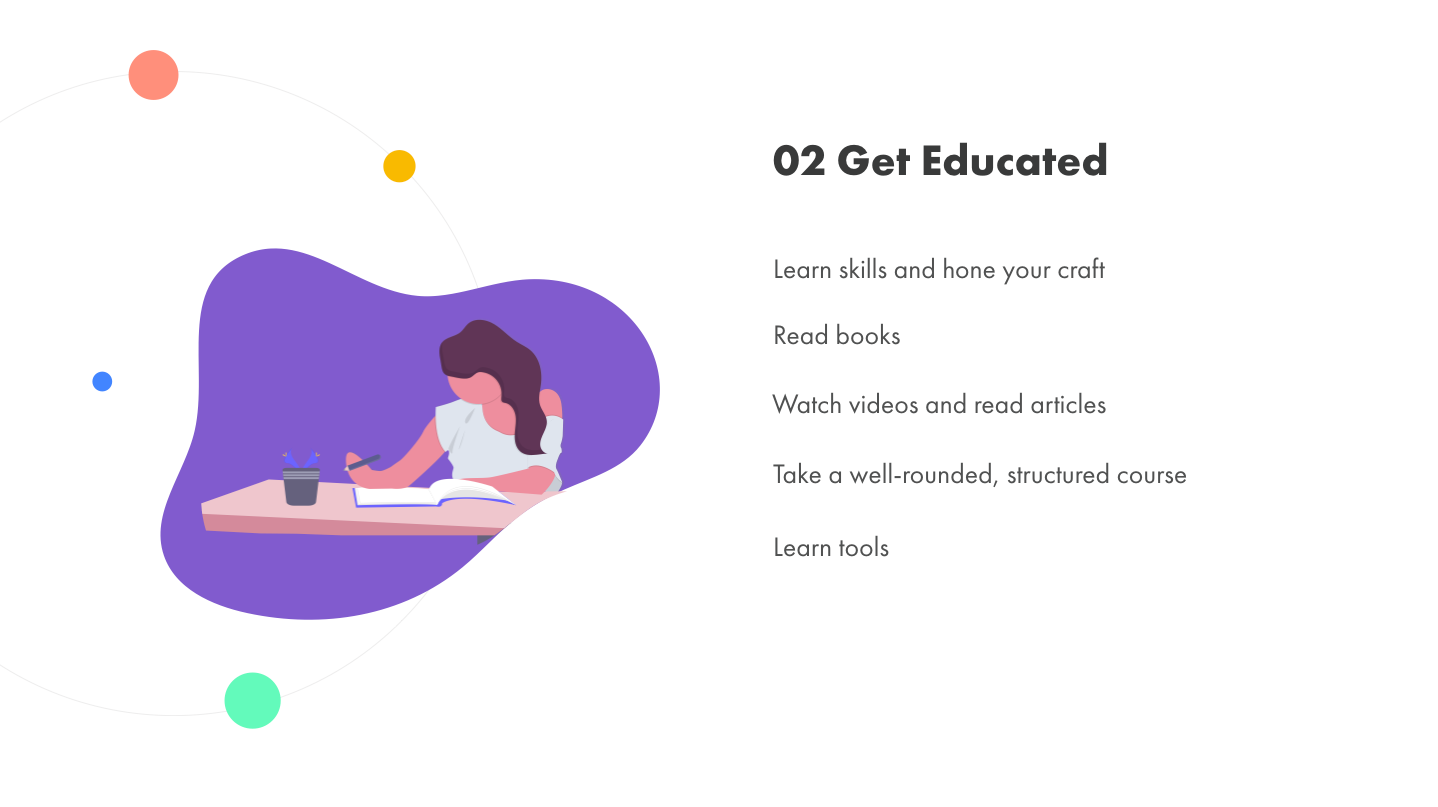
- Learn skills and hone your craft - This step never really ends. I spend a crazy amount of time learning things I did not know yesterday, even 11 years into the design game. It’s competitive out there no matter which path or company you choose, so you need to love to learn and you need to constantly be improving your skills and that takes time and practice. You won’t be great right away but with effort and consistently overtime you can be better than you were yesterday.
- Read books - Read those top 5 popular books that you hear designers quoting all the time. 'Design of everyday things' by the great Don Norman, 'Don’t make me think' by Steve Krug. You know the ones I’m talking about and if you don’t, here's a link to our top UI/UX and Product Design book recommendations.
- Watch videos, read articles - See what’s trending currently in the space, see what people are talking about on Medium, subscribe to design industry blogs like Invision and learn some basic stuff through vids and articles. You can find some great lessons over on our Youtube channel.
- Take a course - Taking a well rounded, structured UI/UX or product design course with lots of process and practical exercises and human contact. Invest in yourself and it will pay you back 10 fold throughout your career. Might I suggest our Product Design Master Course.
- Learn Tools - Choose your UI design weapon. It doesn’t matter so much which one you choose, most design software right now, whether its Sketch or Figma or Adobe XD, are all really similar, so just go with the one that feels the most natural to you and allows you to be most efficient and MASTER IT! Again watch UI/UX tutorials or take a course on that specific application if you need to. Here are our recommendation for top UI/UX and Product Design Tools.
Target 03: Get out there
Now it's time to connect with others. Start listening to and watching talks by professionals and get yourself involved and directly connected with the industry through networking.
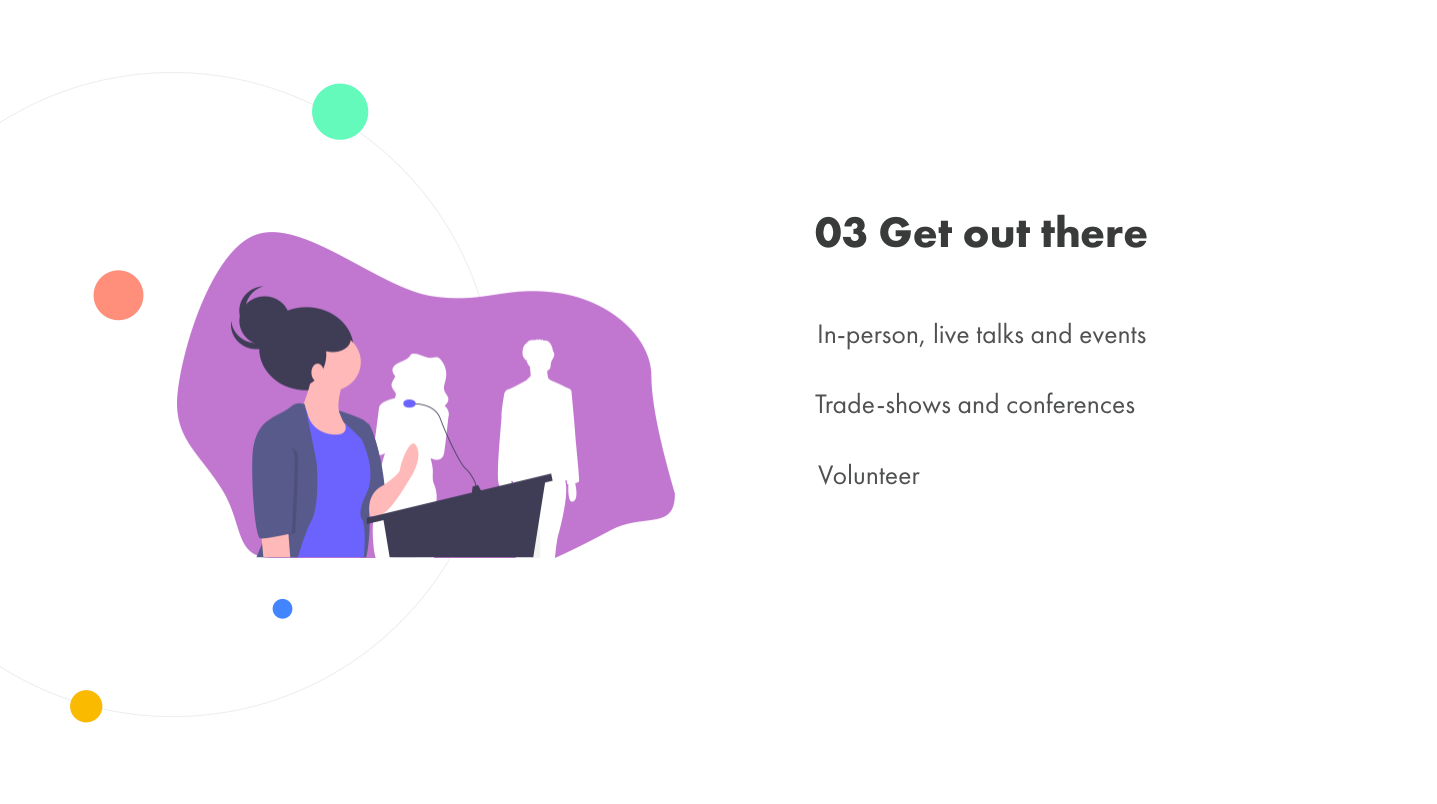
- Go to in-person and live talks and events - Go to meetups, lectures, and other live talks anything where you can gain some insight, inspiration and network with others in the field.
- Attend trade-shows and conference - Get yourself in-front of companies that might need your services. Get familiar with the state of the industry and where things are headed so you can position yourself ahead of the curve.
- Volunteer - See if you can help out and make yourself over the top useful. Maybe a company you are interested in working at is hosting an event, or maybe a remote company is doing a talk - make yourself of use and offer your time. This is actually a really powerful one, because 9 times out of 10 companies will remember the person that showed up and gave their time over someone that emailed them a stellar resume. Making that personal connection can pay itself back in the form of experience, contacts and a memorable first impression.
Target 4 - Do work
Now that you know a thing or two, start putting it all into practice and creating things that you can showcase in your portfolio.
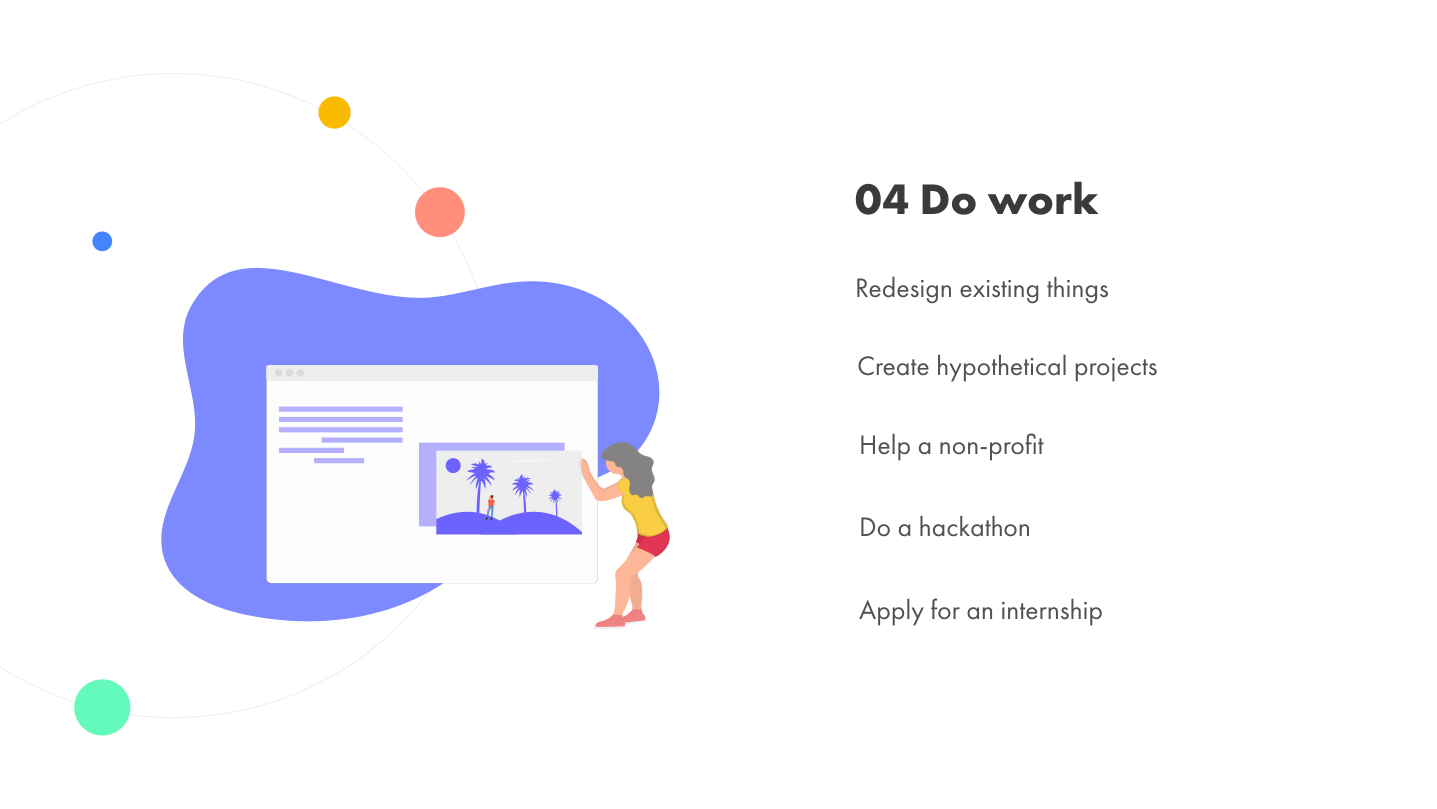
- Redesign existing sites and interfaces - Not just from a visual aspect, you need to do proper UX research and a case study, document your steps, show your process and your thinking and your final redesigns.
- Create hypothetical projects - This can really showcase your ability to take something from idea to finished product.
- Help out a non-profit - This is a great way to get your hands dirty working on a real project for a good cause.
- Do a hackathon - Join other people in creating something and learn team building and collaboration skills.
- Apply for an internship - Gain more experience doing unpaid work in exchange for apprentice training and exposure. Even if you don't have any real world experience here are some ways you can start apply for jobs.
Target 5 - Reach out for mentorship
I can’t tell you how important this is, you need to talk to someone who has been there before and who has seen a lot of edge cases. Asking them your questions and getting their guidance, perspective and advice is priceless.
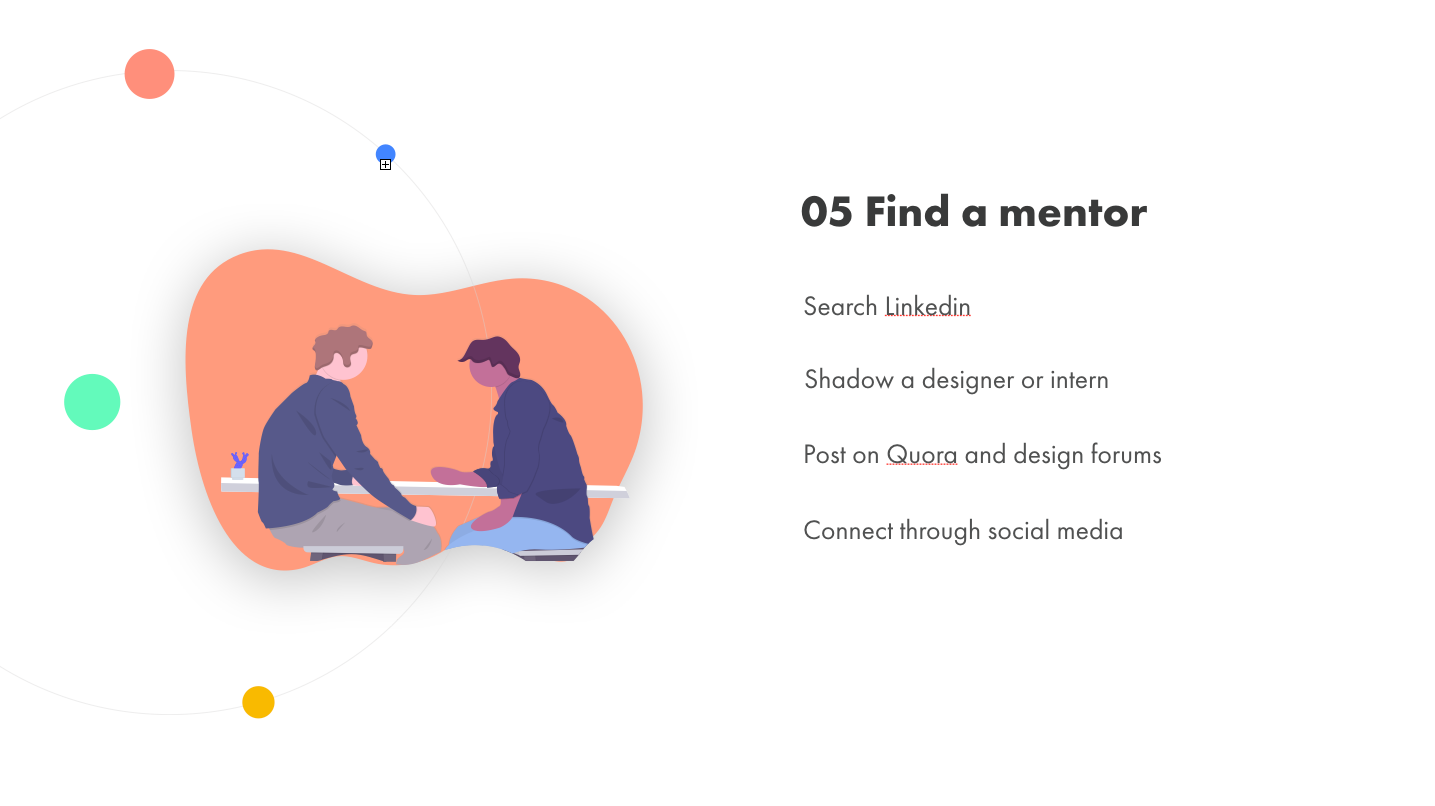
- Find mentors on Linkedin - Reach out in a professional capacity and ask them if they are available for mentorship or even just to talk for a few minutes to pick their brains. Be specific and organized with your ask and respectful of their time.
- Shadow a designer or intern - Connect with other designers and ask if you could spend the day with them or if they've be open to sharing their screen with you while they work on something so you can observe them.
- Join online UI/UX groups and forums - Post your questions to Quora or other design forums and get involved with online design communities.
- Reach out to other designers - Connect through social media or in-person and ask about their experiences.
If you are getting ready to enter the interview process, our partners over at Pathrise have some amazing content to help you nail that interview. Have a look at their post that features actual questions you might encounter when interviewing for a product design positions at companies like Airbnb, Dropbox, Google, Cisco and more.
So those are our tips for a targeted approach to building your portfolio, gaining some experience and going after the roles you want, no matter what level you are at.
In summary:
- Learn the ins and outs of user experience and user research
- Master visual and user interface design
- Join a design community
- Learn the design tools
- Find an instructor to help you reach your potential!


